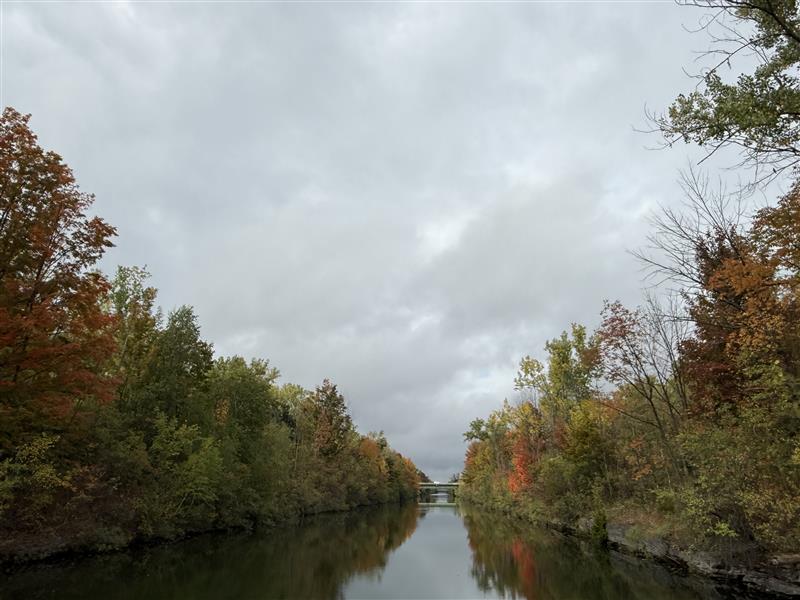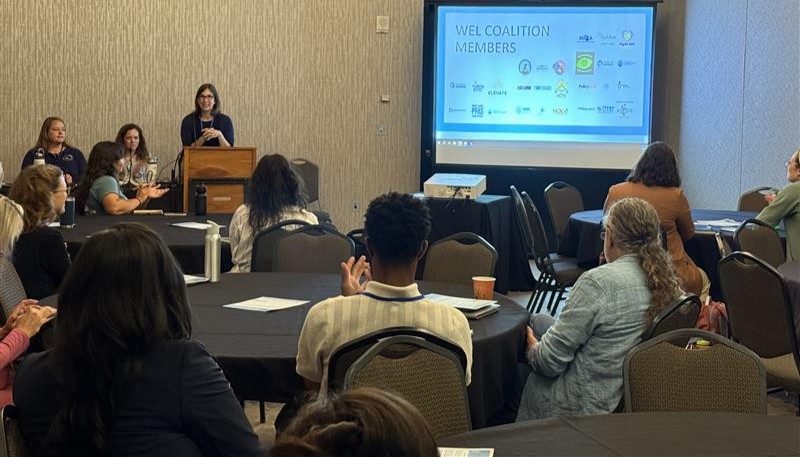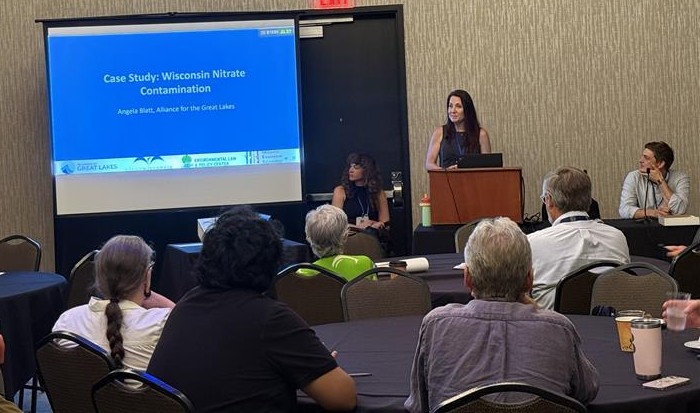This year’s Healing Our Waters Conference brought together hundreds of advocates, funders, scientists, and community leaders in Rochester, New York, to explore solutions for the health of the Great Lakes. Over two days, participants shared knowledge, built new partnerships, and reflected on the region’s shared responsibility to protect its water resources. Healing our Waters is a coalition of more than 180 organizations that work to protect the Great Lakes.
Representing the Alliance for the Great Lakes were Vice President for Programs Megan Cunningham, Senior Agriculture Policy Manager Angela Blatt, and Local Partnership Manager Bre’Shaun Reddick. Each returned from the conference with insights about collaboration, justice, and the power of community-led work.
Rochester: A City Shaped by Water
The conference’s location in Rochester offered a living example of the Great Lakes’ connection to history, innovation, and community. During a tour along the Genesee River and Erie Canal, participants learned how waterways fueled the city’s growth and continue to shape its identity.

“As we marked the 200th anniversary of the Erie Canal, it was a reminder that our waterways have always been drivers of progress,” said Cunningham. “It also pushed us to remember that this progress came at a cost, including the displacement of Indigenous communities. Our responsibility now is to learn from that history and move toward restoration and balance.”
That reflection framed many of the week’s discussions about equitable growth, resource protection, and accountability.
Advancing Water Justice Across the Great Lakes

Cunningham also served as moderator for a panel titled No One Left Thirsty: Advancing Water Justice Across Michigan, which examined water affordability as a human right. She shared findings from the region’s use of federal funds through the Low-Income Water Assistance Program (LIWAP), which between 2021 and 2024 provided $287 million in relief to nearly 400,000 households.
“It’s a reminder that this issue extends beyond any one city or state,” Cunningham said. “Families across the Great Lakes are still struggling to afford their water bills. We need consistent, long-term solutions that make access to clean water a right, not a privilege.”
The panel also featured community and policy leaders who discussed how states can learn from each other’s efforts to make water more affordable and equitable.
Partnership and Shared Learning

For Blatt, the conference reinforced that progress on Great Lakes protection is rooted in relationships.
“There was a strong focus on community-led solutions,” Blatt said. “The Milwaukee Community Advisory Committee model was especially inspiring. It shows how residents can take the lead in shaping restoration projects that reflect their priorities.”
Throughout the event, Blatt met with partners from Michigan and Ohio, spoke with funders, and shared updates about the Alliance’s recent reports. “It was encouraging to hear how our work is resonating with people across the Basin,” she said.
Federal Action and Regional Resilience
In the closing plenary, Eight Months In: Washington’s Impact on the Great Lakes, Cunningham joined policy experts to discuss how federal decisions are shaping the region’s future. While challenges remain, bipartisan support for the Great Lakes Restoration Initiative continues to signal hope.
“There’s a lot that feels uncertain in today’s political climate,” Cunningham said. “But the continued commitment to the Great Lakes shows what’s possible when people put the health of our waters first.”
The discussion also highlighted the importance of maintaining science funding, updating infrastructure, and preparing for long-term challenges such as climate change and water affordability.
Centering Community Voices
For Reddick, attending for the first time as a member of the Healing Our Waters Governing Board was both inspiring and grounding. They explored Rochester’s waterways, birdwatched along the Genesee River, and joined sessions that connected art, culture, and environmental justice.
“The conversations felt grounded and real,” Reddick said. “There was a deep commitment to honoring community voices while building partnerships that create lasting impact.”
The conference reaffirmed that protecting the Great Lakes requires more than policy and research. It takes people.
As Blatt reflected, “The energy was hopeful. We’re not just talking about protecting water. We’re building relationships that make real change possible.”
